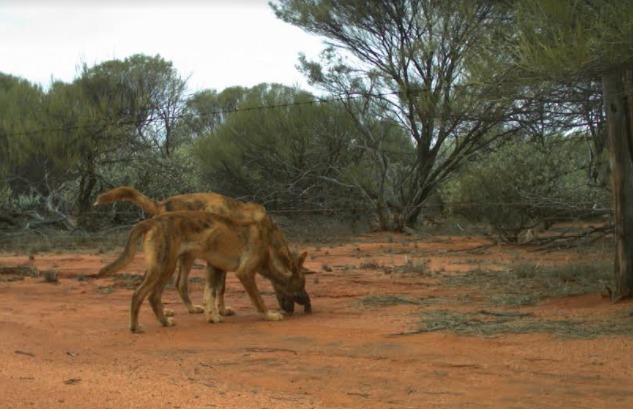
Wild dogs are attracted to a CPE with an innovative odour. Image – DPIRD.
WESTERN Australia’s Department of Primary Industries and Regional Development is testing innovative new approaches to wild dog management to help protect livestock in the state’s southern rangelands.
The new research is an initiative under the State Government’s $13.4 million Wild Dog Action Plan 2021-2025 to complement existing control techniques.
Ceres smart tag technology, novel odours to improve bait lure uptake, and the use of squawkers and howlers are being trialled on a number of stations in an effort to deter wild dogs from livestock production areas.
DPIRD research scientist Tracey Kreplins said Ceres Tag technology uses a high-tech tag connected directly to satellites to provide a range of unique capabilities including GPS tracking of cattle.
“As well as the GPS tracking, the tags provide real time identification of individual cattle, animal-specific data such as their feeding rate, and movement surveillance,” she said.
“Although originally designed for cattle producers, we are trialling the technology to improve our understanding of wild dogs, and our ability to closely study interactions between wild dogs and cattle movement.”
Dr Kreplins said baiting was another important tool in wild dog management which in some cases could be made more effective through the use of canid pest ejectors (CPEs) – a mechanical device with an interchangeable lure head that could be left in place for extended periods.
The testing of novel odours in the rangelands to improve lure uptake on CPEs by wild dogs has been completed with Dr Kreplins’ abstract of the report published online.
“We trialled eight different felt lure head odours comprising liver treats, dried meat, synthetic fermented egg, vanilla essence, horse hooves, animal fat and fish oil,” Dr Kreplins said.
“The felt lure head is soaked in the odour for about a week before being deployed to ensure the scent is maintained for up to one month.
“Traditional baits such as dried meat baits are known to attract non-target species including feral cats, kangaroos, emus, ravens and goannas.”
CPEs can only be triggered by wild dogs, or foxes, using an upward pull. Along with the use of felt lure heads that minimise non-target uptake, CPEs can become a very target specific tool for wild dogs.
Dr Kreplins said the department had been testing ‘squawkers’ and ‘howlers’ in the cell fencing areas since February 2019 with some success and expanded the trial along the State Barrier Fence last year.
“These non-lethal deterrents use motion activated speakers around fenced areas to keep dogs out of livestock production areas,” she said.
“So far our research shows these techniques work best on a small scale.”
As a result of this work, the department is planning to install squawkers at grids along the State Barrier Fence.
Dr Kreplins said running small stock in WA’s southern rangelands had become increasingly difficult due to the current density of wild dogs and their predation activities.

HAVE YOUR SAY